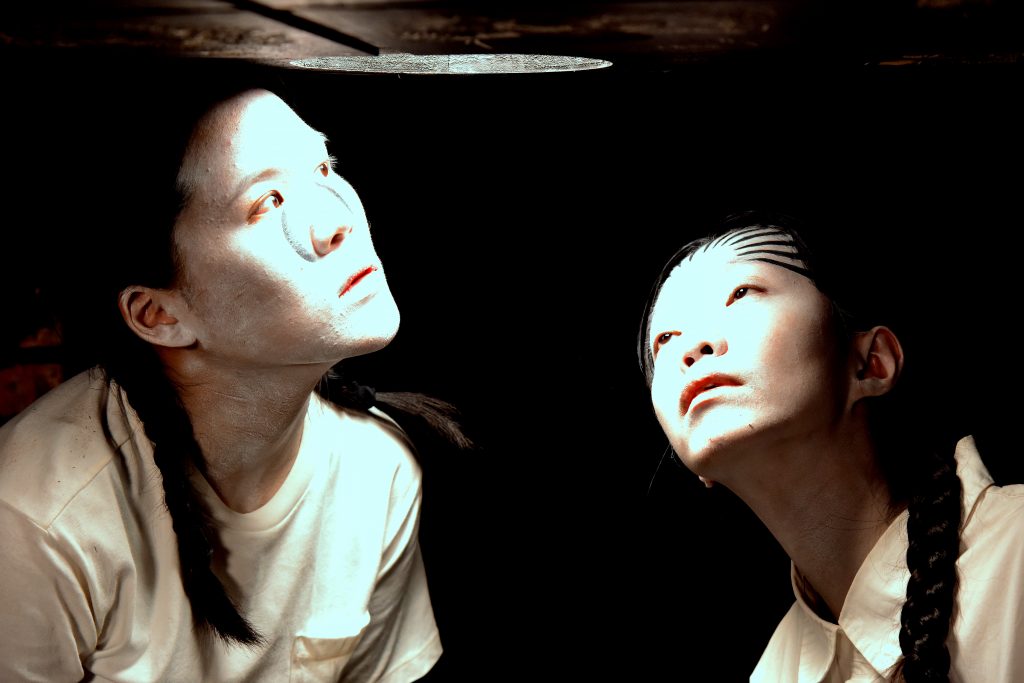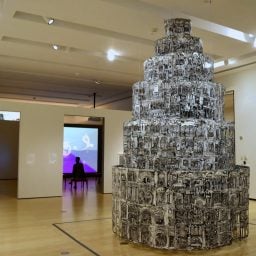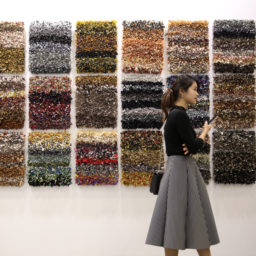The Taipei Biennial—one of the few international art events to materialize in the second half of 2020—has a counterintuitive title: “You and I Don’t Live on the Same Planet.” Of course, the events of this year have proven just how very interconnected the world is—particularly when faced with a common enemy.
Some 57 artists and collectives are taking part in the 12th edition of the biennial, which is co-curated by the French philosopher Bruno Latour and independent curators Martin Guinard and Eva Lin. Open through March 14 at the Taipei Fine Arts Museum in Taiwan, its central concern is a non-virus-related enemy facing the planet: climate change.
For the exhibition, the curators transformed the museum into a makeshift planetarium, with artist projects aligning themselves with different versions of Earth. There’s the relentless modernization of planet “globalization”; the wall-building of planet “security”; the retreat of planet “escape”; the metaphysical solace of planet “alternative gravity”; and the urgent ecological concerns of planet “terrestrial.”
What Planet Do You Want to Live On?
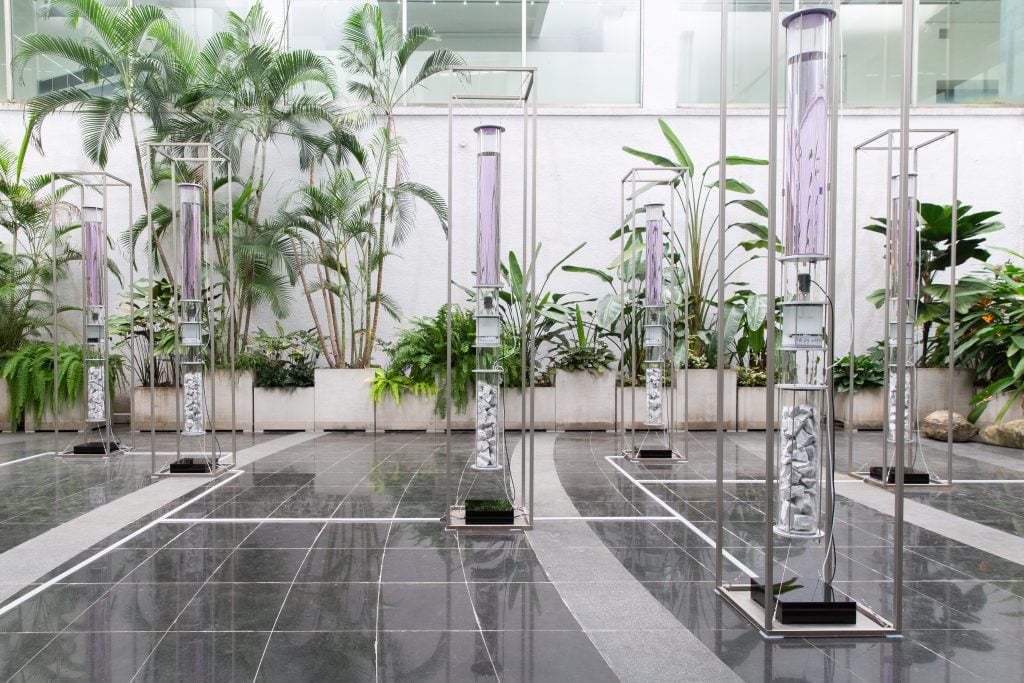
Chang Yung-Ta, scape.unseen_model-T (2020). Installation, dimensions variable. Courtesy of the Artist and Taipei Fine Arts Museum.
Speaking to Artnet News, co-curators Latour and Guinard acknowledge the irony of using an international art event such as a biennial—which the art-world establishment often jet around the world to attend—to sound the alarm on climate change.
“The art world is part of the problem as it is part of the planet Globalization,” the curators say. For their part, they took pains to model a sustainable approach to curating by finding ways to recycle walls, reproduce works rather than transport them, lighten the weight of transport crates, and reduce air travel.
They also enlisted an environmental engineer, Stéphane Verlet-Bottéro, to calculate the exhibition’s CO2 emissions—which clock in at a hefty total of around 400 tons, excluding the footprint left by any international visitors who do eventually travel to Taiwan. “All in all, we are pretty comfortable with the fact that this is an exhibition for the Taiwanese public, which in many ways significantly decreases the carbon footprint of this exhibition,” the curators say.
They add that the central question of the exhibition—“what planet do you want to live on?”—takes on a different significance when addressed to a more heterogeneous local public than the hyper-globalized art world. The art world may be heterogenous in its own way, but it also has a tendency to absorb and defang its own criticism by, for example, transferring high market value onto the work of artists who confront issues of sustainability.
The Power of Fiction
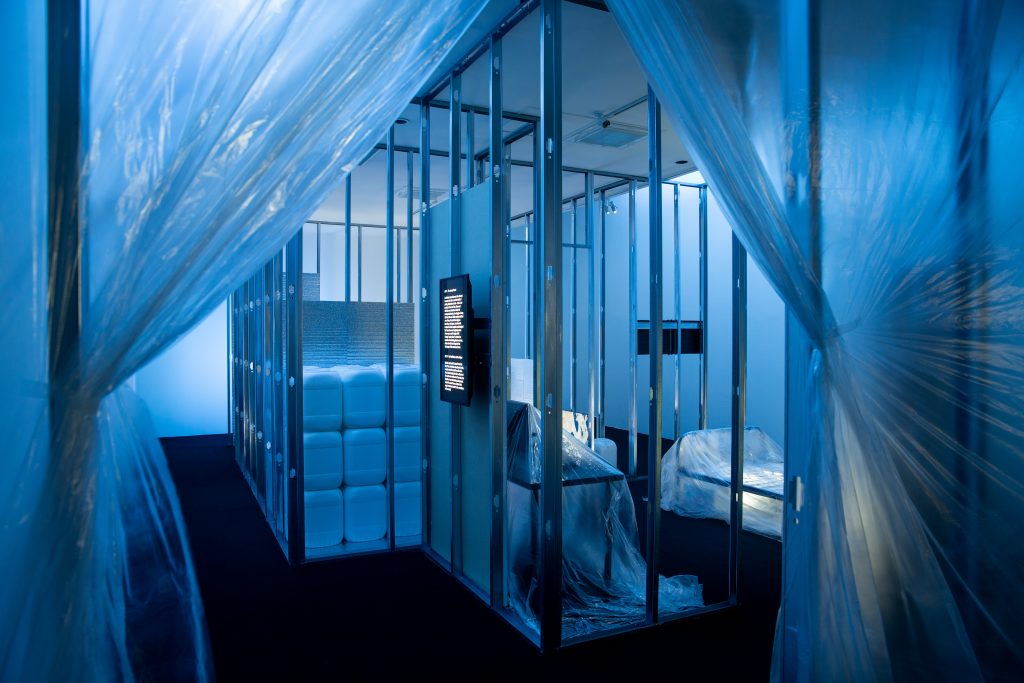
Femke Herregraven, Corrupted Air –Act VI (2019). Mixed media installation, dimensions variable. Courtesy of the Artist and Taipei Fine Arts Museum.
Latour and Guinard are under no illusion that the artworks they have gathered together can directly change the world. “Since reality is extremely difficult to ‘figure out,’ fiction and art are powerful ways to understand it,” they explain. “Many of the works we gathered are not ‘activist’ in the sense that they don’t put as their first agenda a call to action, but rather propose a strong aesthetic experience.”
Meanwhile, co-curator Eva Lin, who devised the biennial’s public programming, pours cold water on any optimism about how the public health situation might slow the pace of environmental destruction. In the long-term, she says, the reality is “extremely depressing” because the economic crisis unleashed by the shutdown will likely serve as an excuse for countries “to blindly prioritize economic growth over climate actions even more.”
Still, however, there are some opportunities in the moment. The curator points out that as the virus swept across the world, it united people from different geographical backgrounds, cultures, and values with a common focus—a feat that humans have not been able to achieve “through preaching, advocacy, or coercion.” She wants to harness that power to motivate people to take urgent action and face the biennial’s concerns head on.
While the exhibition embodies the philosophies of the different planets, Lin says the public programs are where these planets collide. In other words, they are meant to help people explore how to respond, evaluate, and negotiate the disparate forces pulling at them.
The interdisciplinary programs include a series of model conferences called “Theater of Negotiations” that will respond to several real social controversies in Taiwan, as well as sci-fi writing workshops and days-long field trips to the upper reaches of Zengwen River.
Lin says the programs aim to “achieve a goal similar to a plot twist in a movie or novel”—which is to say, spark an epiphany that prompts people to adopt a new perspective, and perhaps even go as far as to change their minds about how they approach nature, ecology, globalization, and more.
The Taipei Biennial, “You and I Don’t Live on the Same Planet,” is on view through March 14, 2021, at the Taipei Fine Arts Museum in Taiwan.
